Surgery
Bowel evisceration after sneezing
We've previously drawn attention to some of the dangers of coughing and sneezing. Such as the cases of people who sneezed so hard that their eye fell out. Or the woman who coughed out her lung.Now the American Journal of Medical Case Reports has published a case of "bowel evisceration after sneezing." A man sneezed violently while dining at a restaurant and then realized that his intestines had come out of a surgical incision in his stomach. He thought the incision was fully healed. From the journal:
During breakfast, the man sneezed forcefully, followed by coughing. He immediately noticed a “wet” sensation and pain in his lower abdomen. Looking down, he observed several loops of pink bowel protruding from his recent surgical site. He later related that he was unsure of how to proceed, so he covered the exposed intestines with his shirt. He initially decided to drive himself to the hospital, but concerned that changing his position might injure his bowel, his wife requested an ambulance.
To be fair, sometimes sneezing can cause miraculous recoveries, such as the case of the woman whose deafness was cured by a sneeze.
Posted By: Alex - Sun Jun 30, 2024 -
Comments (0)
Category: Health, Surgery
An unusual rectal foreign body
An article recently published in the International Journal of Surgery Case Reports describes the case of an unusual foreign body (a dumbbell) removed from a patient's rectum. It also provides a brief overview of the phenomenon of unusual foreign bodies that end up in rectums: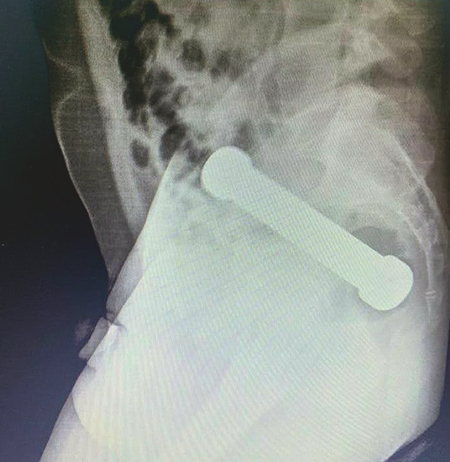
Posted By: Alex - Sat Apr 23, 2022 -
Comments (1)
Category: Health, Surgery, Sex Toys
Skin whitening by intestine shortening
Back in the 1970s, some women in Japan reportedly tried to whiten their skin by having surgery to remove a section of their intestines:Up to 50 inches of the large intestine have to be removed according to Dr. Tadao Yagi, director of a private hospital that specializes in the operation.
I can't imagine why this would work. Perhaps the women grew paler because of malnutrition?

San Francisco Examiner - Mar 26, 1975
I believe these may be photos of the operation being performed, from an article by Tadao Yagi in the Japanese Journal of Medical Instrumentation.
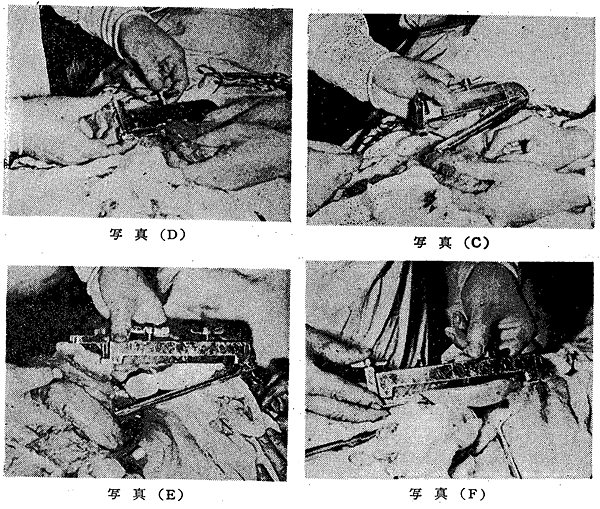
Posted By: Alex - Thu Nov 18, 2021 -
Comments (3)
Category: Beauty, Ugliness and Other Aesthetic Issues, Patent Medicines, Nostrums and Snake Oil, Surgery, 1970s
Vasectomy World Record
As far as I can tell, the world record for the most voluntary vasectomies performed in a single day (and at a single event) was set on December 5, 1987 in Bangkok, when 1214 men received the operation. This beat the previous record of 1202, set in 1983.Interesting how the article specifies these were voluntary vasectomies. Is there a separate record for involuntary ones?
Anyway, 'most vasectomies' appears to be a category that Guinness doesn't bother to cover.

Des Moines Register - Dec 6, 1987
Posted By: Alex - Mon Aug 19, 2019 -
Comments (1)
Category: World Records, Surgery
Signs of Health
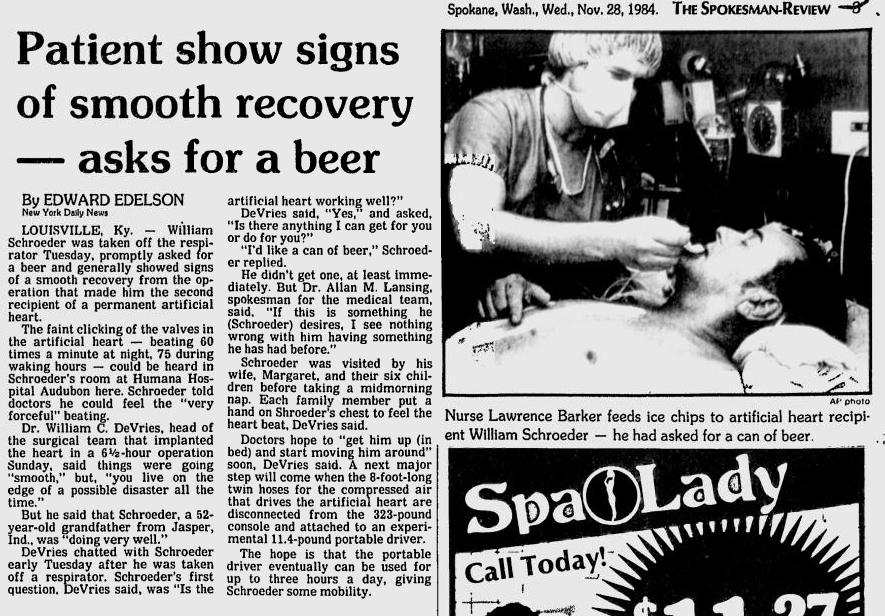
Alas, this positive sign was not an accurate forecast of the fate of William Schroeder.
Article source.
Posted By: Paul - Wed Jul 10, 2019 -
Comments (2)
Category: Body, Death, Health, Surgery, 1980s, Alcohol
I Was a Teenage Brain Surgeon
Posted By: Paul - Mon Jun 03, 2019 -
Comments (0)
Category: Humor, Music, Surgery, Teenagers, 1950s, Brain
World record for most severed hands reattached in one week
As far as I can tell, their claim to this record remains unchallenged.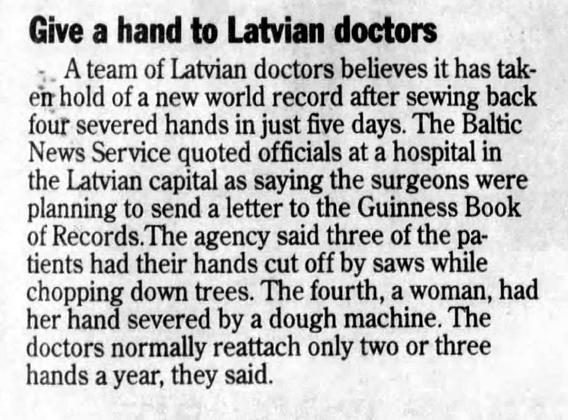
Palm Beach Post - Nov 1, 1997
Posted By: Alex - Sun May 26, 2019 -
Comments (1)
Category: World Records, Surgery, 1990s
Dr. John Bongiovanni, the blind surgeon
So, how many decisions during surgery don't require eyesight?
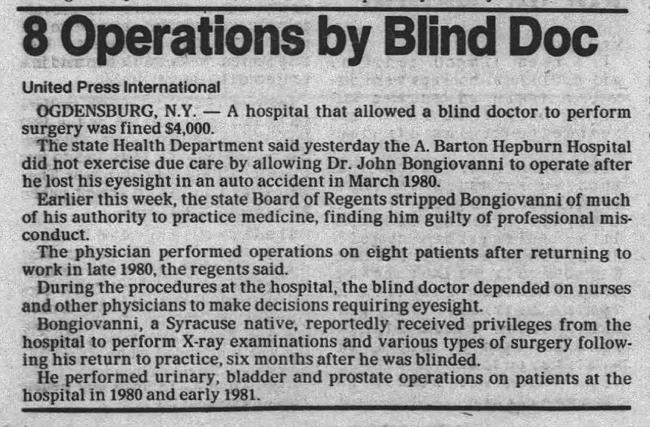
Philadelphia Daily News - Mar 2, 1984
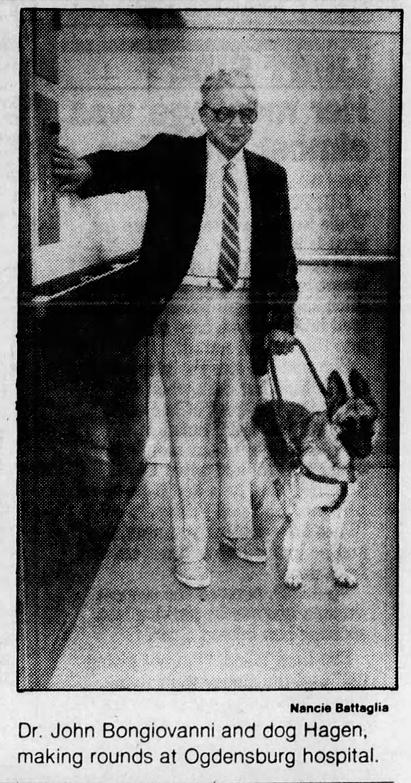
Rochester Democrat and Chronicle - Aug 26, 1984
Posted By: Alex - Sat Mar 16, 2019 -
Comments (7)
Category: Surgery, 1980s, Eyes and Vision
Frozen Sections of a Child
Back in 1881, Dr. Thomas Dwight of Harvard Medical School authored Frozen Sections of a Child, which sounds like the kind of book one might find in the library of a serial killer. As the title indicated, the book consisted of anatomical illustrations of frozen cross-sections of a three-year-old child.In the preface, Dwight helpfully included advice for those readers who might want to create their own frozen sections of a child:
More details: Harvard's Countway Library. You can also read the full book online via Google Books.
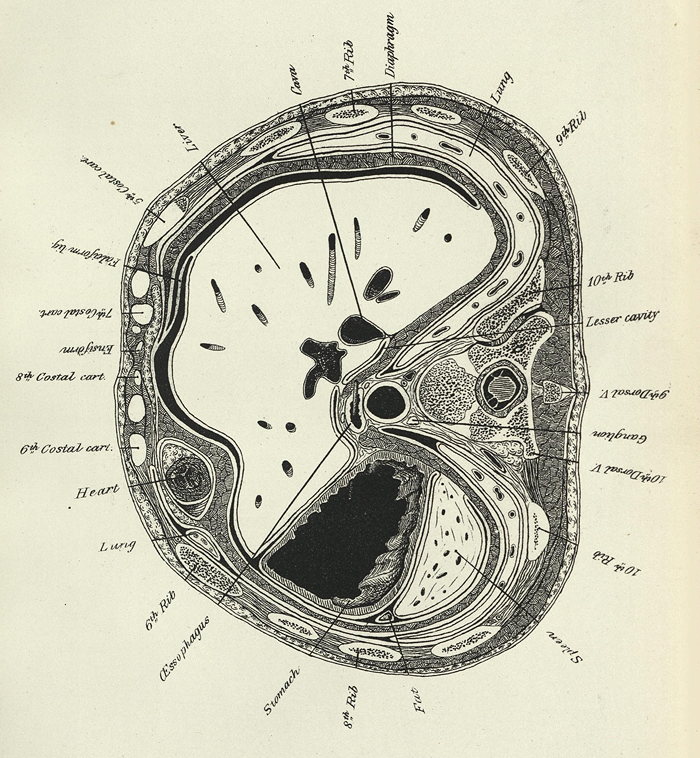
Posted By: Alex - Fri Feb 15, 2019 -
Comments (0)
Category: Body, Surgery, Books, Nineteenth Century
Circumcision training school
The Brith Milah School, established at New York’s Mount Sinai Hospital in 1968, was the world’s first-ever (and only?) school for circumcision training. It was a two-year program followed by a one-year internship. (Seems like a lot of training for a relatively simple operation. Though I guess it's important not to mess it up.)The first class graduated in 1970, but by the 1980s the school evidently no longer existed. According to a 1989 story on JTA (Jewish Telegraphic Agency) it “ran into problems when it could not get malpractice insurance for trainees who were not physicians.”
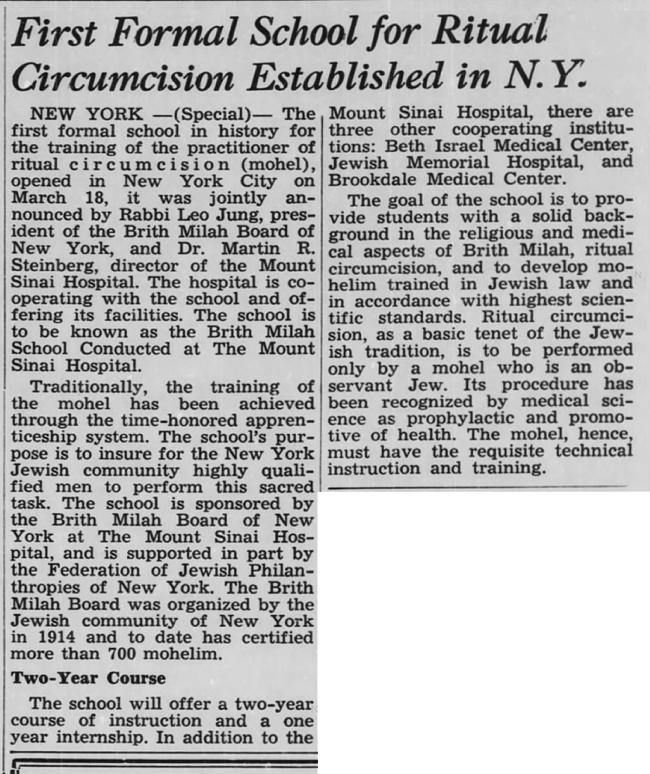
Wisconsin Jewish Chronicle - Mar 22, 1968

Wisconsin Jewish Chronicle - Dec 25, 1970
Posted By: Alex - Wed Nov 21, 2018 -
Comments (5)
Category: Body Modifications, Surgery, 1960s

| Who We Are |
|---|
| Alex Boese Alex is the creator and curator of the Museum of Hoaxes. He's also the author of various weird, non-fiction, science-themed books such as Elephants on Acid and Psychedelic Apes. Paul Di Filippo Paul has been paid to put weird ideas into fictional form for over thirty years, in his career as a noted science fiction writer. He has recently begun blogging on many curious topics with three fellow writers at The Inferior 4+1. Contact Us |




